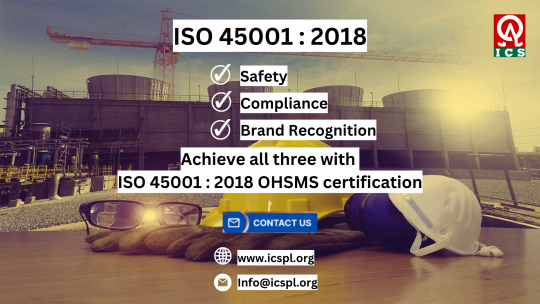#occupational certificate
Explore tagged Tumblr posts
Text
The Birth Certificates



Israel killed his wife, and his newborn children as he was picking up their birth certificates.
The mother was also a physician.
Richard Medhurst
#photography#palestine#gaza#islamophobia#israel#Birth certificate#war crimes#war criminals#crimes against children#crimes against women#crimes against humanity#genocide#gaza genocide#palestinian genocide#israel is committing genocide#stop the genocide#genocide joe#ethnic cleansing#israeli occupation#unrwa#free gaza#gaza strip#gazaunderattack#fuck israel#palestine genocide#free palestine#save palestine#i stand with palestine#palestine news#palestinian lives matter
82 notes
·
View notes
Text



I would expect something like this from the US or Germany. Kinda surprised that Canada would pull this. Are people going to start burning old maps, books and almanacs? Israel has already done a great deal to destroy official Palestinian records. This is Canada's complicity in literally erasing an entire land and its people.

#no country of origin#this is some bleak dystopian shit#really Canada?#apartheid#save palestine#ethnic cleansing#israel is an apartheid state#seek truth#free palestine 🇵🇸#genocide#illegal occupation#israel is committing genocide#israeli war crimes#from the river to the sea palestine will be free#birth certificates#passports#college degrees#property deeds#im the least religious person you will ever meet but Israel is bringing a biblical level apocalypse down onto their own heads#israel is like a bratty child plugging their ears refusing to hear reality#you will never erase Palestine or its people#stolen lives#stolen land#stolen culture#palestinian culture#right to self determination#seek the truth and share it#spread awareness#we will never forget#this simply will not stand forever
10 notes
·
View notes
Text

#OTHM-UK Courses at Lowest Fees#OTHM Level 3 Technical Certificate in Occupational Health and Safety#OTHM Level 6 Certificate in Occupational Health and Safety#OTHM Level 6 Diploma in Logistics and Supply Chain Management#OTHM Level 6 Diploma in Occupational Health and Safety#OTHM Level 7 Diploma in Logistics and Supply Chain Management#OTHM Level 7 Diploma in Occupational Health and Safety Management#OTHM Level 7 Diploma in Project Management#OTHM Level 7 Diploma in Risk Management#OTHM Level 7 International Diploma in Environmental and sustainability Management#𝐂𝐨𝐬𝐦𝐨𝐬 𝐈𝐧𝐭𝐞𝐫𝐧𝐚𝐭𝐢𝐨𝐧𝐚𝐥 𝐓𝐫𝐚𝐢𝐧𝐢𝐧𝐠 𝐈𝐧𝐬𝐭𝐢𝐭𝐮𝐭𝐞 (𝐂𝐈𝐓𝐈)#Mob No.: +919787872866. +919787873866#Email:#[email protected]#Web:#www.cosmostrg.com#WhatsApp Channel :#https://whatsapp.com/channel/0029VaHMYayGufJ45OH4Xo1n#WhatsApp Group :#https://chat.whatsapp.com/IunhDueyuLsEPc9SkB7dlK#OTHM#OTHMlevel6#OTHMlevel3#othmuk#level6healthandsafety#chainmanagment#SafetyOfficerTraining#safetyofficer#safetyofficercourse#healthandsafetytraining
0 notes
Text
Elevated Work Platform Workplace Safety Training
Ensure workplace safety with our comprehensive Elevated Work Platform course. Get certified to operate boom and scissor lifts.
0 notes
Text

When purchasing property, one essential document that often gets overlooked is the Occupancy Certificate (OC). This document is crucial, and buying property without it can lead to significant legal and financial issues down the line.
What is an Occupancy Certificate ?
An Occupancy Certificate, commonly abbreviated as OC, is a document issued by the local municipal authorities. It certifies that a building has been constructed according to the approved plans and complies with the safety standards and regulations set by the local government. The OC essentially confirms that the building is fit for occupation, ensuring that all necessary infrastructure, such as water supply, sewage, and fire safety systems, are in place and functioning correctly.
Why is the Occupancy Certificate Crucial?
Obtaining an OC is not just a formality; it is a legal obligation. Developers must secure this certificate before allowing buyers to move into the building. Without an OC, the building is considered illegal, and buyers may face several complications:
Impact on Property Value: Properties without an OC are difficult to sell or rent. Potential buyers or tenants may be reluctant to invest in a property that doesn’t have this critical certification, significantly reducing its market value.
Bank Loan Disbursement: Banks and financial institutions usually require an OC before disbursing the final installment of a home loan. Without an OC, buyers may face delays or even denial of loans.
How to Obtain an Occupancy Certificate?
The process of obtaining an OC involves several standard steps:
Completion of Construction: Before applying for an OC, the builder must ensure that the construction is completed according to approved plans and building codes.
Application Submission: The builder submits an application to the municipal authority, including documents like approved plans, fire safety certificates, and more.
Inspection by Authorities: The municipal authority inspects the building for compliance with safety standards and approved plans.
Issuance of the Certificate: If all criteria are met, a full or partial OC is issued, depending on the project’s completion.
Partial OC: Issued when only a portion of the building is fit for occupancy.
Full OC: Issued when the entire building is compliant and ready for occupancy.
The Legal Implications of Not Having an OC
Indian real estate laws have become increasingly stringent to protect homebuyers from fraudulent practices. In Maharashtra, the Real Estate (Regulation and Development) Act, 2016 (RERA) has further reinforced the need for transparency and accountability in the real estate sector. Under RERA, obtaining an OC is mandatory before a developer can hand over possession of the property to the buyer.
Without an OC, the property is deemed illegal, and buyers may face difficulties in registering the property in their name. Additionally, municipal authorities have the power to disconnect essential services like water and electricity if a building is occupied without a valid OC.
The Role of an OC in Redevelopment Projects
In recent times, with the surge in redevelopment projects across Maharashtra, especially in cities like Mumbai, the importance of an OC has grown even further. Redeveloped properties must also secure a new OC before the residents can occupy the building. Failure to obtain this certificate can result in the project being classified as incomplete or non-compliant with local laws.
Final Takeaway
An Occupancy Certificate is not just a document; it is a symbol of safety, legality, and peace of mind in the property buying process. Whether you are buying a new property or investing in a redeveloped one, always ensure that the building has a valid OC before making any commitments. It is your right as a buyer to demand this certificate, and it is the developer’s responsibility to provide it. By doing so, you protect your investment and ensure that your new home is safe and legally sound.
Remember, an OC is more than just a piece of paper — it’s your “green light” to move into your new home with confidence.
Looking for genuine brokers who can help you buy, sell or rent your property faster?
Get expert opinions and real estate assistance from an extensive catalog of registered, genuine & trusted real estate agents in your preferred locality. Also, if you’re looking to sell your property, you can list your property on our portal for FREE and showcase it to 50,000+ active home seekers & attract genuine buyers.
Looking for genuine real estate brokers who can help you buy, sell, or rent your property faster?
Get expert opinions and real estate assistance from an extensive catalog of registered, genuine & trusted real estate agents in your preferred locality. Also, if you’re looking to sell your property, you can list your property on our portal for FREE and showcase it to 50,000+ active home seekers & attract genuine buyers.
Find Real Estate Agents in Mumbai
Real Estate Agents in Bhandup East
Real Estate Agents in Chembur East
Real Estate Agents in Ghatkopar East
Real Estate Agents in Mulund East
Real Estate Agents in Powai
Real Estate Agents in Mira Road East
Real Estate Agents in Kamothe
Real Estate Agents in Kharghar
Real Estate Agents in New Panvel
Real Estate Agents in Taloja
Real Estate Agents in Ulwe
Real Estate Agents in Ambernath East
Real Estate Agents in Badlapur East
Real Estate Agents in Dombivali East
Real Estate Agents in Kalyan East
Real Estate Agents in Karjat
Real Estate Agents in Neral
Real Estate Agents in Andheri East
Real Estate Agents in Bandra East
Real Estate Agents in Borivali East
Real Estate Agents in Dahisar East
Real Estate Agents in Goregaon East
Real Estate Agents in Kandivali East
Real Estate Agents in Malad East
Real Estate Agents in Navi Mumbai
Real Estate Agents in Thane
0 notes
Text
Step-by-Step Guide to Obtaining an Occupancy Certificate: What Homebuyers Need to Know
Purchasing a new home is an exciting milestone, but it’s crucial to ensure that your property is legally fit for habitation. One of the most critical documents you need to obtain is an Occupancy Certificate (OC). This legal document, issued by the local municipal authority, certifies that the building is safe and complies with approved plans, making it habitable. Here’s a step-by-step guide to help homebuyers navigate the process of obtaining an OC.
Step 1: Ensure Completion of Construction
Before applying for an OC, the construction of the building must be fully completed according to the approved plans. Ensure that the developer has acquired all necessary No-Objection Certificates (NOCs) from various authorities, such as the fire department and pollution control board. The building must also be equipped with essential services like drainage and electricity.
Step 2: Gather Required Documents
To apply for an OC, a series of documents are required:
Project Commencement Certificate: Proof that the construction project had official approval to start.
Sanctioned Building Plan: A copy of the building’s approved layout and specifications.
Completion Certificate: Confirms that the building is constructed as per the sanctioned plan.
Architect-Approved Area Computation Sheet: Details the built-up area as calculated by a licensed architect.
Photographs of the Building: Recent pictures showing the completed structure and its features.
NOCs: From the fire department and pollution control board, ensuring compliance with safety and environmental standards.
Property Tax Receipts: Up-to-date property tax bills must be submitted.
Step 3: Application Submission
Once all documents are in place, the developer (or builder) applies for the Occupancy Certificate at the local municipal authority. Homebuyers should confirm with the developer that this step has been taken and that the application has been submitted.
Step 4: Inspection by Authorities
After the application is submitted, the local municipal body conducts an inspection of the building. Inspectors verify that the building adheres to the approved plans, complies with safety regulations, and has the necessary amenities. Only after a thorough review will the municipal authority approve the OC.
Step 5: Receive the Occupancy Certificate
If the building meets all the necessary criteria, the Occupancy Certificate is usually issued within 30 days. This document certifies that the property is legally fit for occupancy. Homebuyers should request a copy of the OC from the developer before taking possession of the property.
Step 6: Verify the OC
Homebuyers can verify the OC online by visiting the official website of the local municipal authority. In the "Building Permission" section, they can input the property details and check the status of the OC. If unavailable online, they can request it from the local municipal office.
Why It Matters
An OC is more than just a formality. It is a legal document that guarantees the building is safe and compliant with local laws. Without it, homebuyers may face legal consequences, difficulties in obtaining essential services like water and electricity, and potential resale challenges.
By following these steps and ensuring the developer secures an OC, homebuyers can protect their investment and ensure a safe, legally compliant home for themselves and their families.
0 notes
Text
“Gas certification” is greenwashing
New report finds industry-operated methane monitors regularly miss pollution events “‘Certified’ gas is the industry’s latest effort at … “Gas certification” is greenwashing

View On WordPress
#Climate change#Employment#EPA#Fossil Fuels#Gas Certification#Health#Methane Emissions#News#Occupational safety and health#United States
0 notes
Text
The Significance of Occupancy Certificate (OC) in Real Estate
An Occupancy Certificate (OC) is essential in real estate, confirming a property's compliance with local building codes and safety standards. Issued by local municipal authorities, it ensures the property is ready for habitation. The OC is crucial for legal obligations, safety assurance, financial compliance, enhancing property value, and promoting transparency. Obtaining an OC involves submitting applications, undergoing inspections, and paying necessary fees. Developers can also acquire partial OCs for completed sections of larger projects.For more details, visit Divyasparsh Blog.
0 notes
Text
IOSH Managing Safely Course | Occupational Health and Safety Courses in Mumbai

IOSH Managing Safely Course Overview
The IOSH Managing Safely course offered by the British Safety Council is designed to equip managers and supervisors with the knowledge and skills needed to manage health and safety effectively within their teams. This course is crucial for anyone in a managerial or supervisory role across any industry, providing practical steps to enhance workplace safety and compliance.
Key Features
Comprehensive Curriculum: The course covers a broad range of safety management topics, including risk assessment, accident investigation, and performance measurement, ensuring a well-rounded understanding of workplace safety.
Practical Focus: Emphasis is placed on practical actions that can be implemented immediately, making it easier for managers to translate learning into real-world improvements in their workplaces.
Flexibility: The course can be taken in various formats, including classroom, online, or blended learning, allowing participants to choose the option that best fits their schedules and learning preferences.
Accreditation: Successful completion of the course awards a nationally recognized certificate from the Institution of Occupational Safety and Health (IOSH), enhancing participants' professional credentials.
Course Structure
Introduction to Managing Safely: This module sets the stage by explaining the importance of managing safely and introduces key concepts of health and safety management.
Assessing Risks: Participants learn how to identify hazards, evaluate risks, and implement effective control measures.
Controlling Risks: Focuses on understanding and applying various control strategies to minimize workplace risks.
Understanding Responsibilities: Clarifies legal and organizational responsibilities for health and safety, helping managers ensure compliance.
Identifying Hazards: Provides detailed insights into common workplace hazards and how to address them.
Investigating Incidents: Teaches the processes involved in investigating accidents and incidents to prevent recurrence.
Measuring Performance: Covers techniques for monitoring and reviewing safety performance to drive continuous improvement.
Benefits of the Course
Enhanced Safety Culture: By empowering managers with the right skills, the course helps foster a proactive safety culture within organizations.
Compliance Assurance: Ensures that managers understand and can meet legal and regulatory health and safety requirements.
Reduced Incidents: Effective safety management reduces workplace accidents and incidents, leading to lower downtime and costs associated with injuries.
Professional Development: Boosts the professional development of participants, making them more valuable to their organizations and advancing their careers.
Who Should Attend?
This course is ideal for managers, supervisors, and anyone responsible for managing others in the workplace. It is suitable for all industries and sectors, making it a versatile choice for those looking to improve their health and safety management skills.
Enrollment Information
To enroll in the IOSH Managing Safely course, visit the British Safety Council India website. Detailed information about course dates, fees, and registration processes can be found there, ensuring a seamless enrollment experience.
Enhance your managerial skills and contribute to a safer workplace by enrolling in the IOSH Managing Safely course today.
#iosh#iosh course in mumbai#iosh certificate#IOSH Managing Safely#iosh course#iosh health and safety course#health and safety course#safety course in mumbai#best safety course in india#health & safety courses online#online industrial safety courses in india#occupational health and safety courses in mumbai#industrial safety course#safety course
0 notes
Text
Working for Sophia is like that whack a mole game and you think you've got things under control, you're doing everything that comes at you and all of a sudden one just comes out and asks for six cheese biscuits punches you in the face
#i had two endings to the joke and i couldn't decide so have them both#idk I'm probably overexaggerating#working for sophia is the same as working for anyone#sophia is going to see one of her houses that has just been built tomorrow morning but the builder hasn't issued a certificate of occupancy#so it's not liveable#and he's done something with the stairs that he needs to fix#she's selling a house on 8th June (Faz birthday)#happy birthday fazzy we're taking you for a special birthday trip to the auction of your fourth wife's investment property#it's in Blackburn#The house being sold#i assume the houses that have just been built are in Ivanhoe maybe????#anyway#good luck to her#she'll finally have money..... to buy more houses!!!!!!!
0 notes
Text
How to Get Occupancy Certificate in Chennai?
Obtaining an Occupancy Certificate in Chennai is an essential process for verifying that a constructed building or structure complies with the approved plan and building regulations. What is an Occupancy Certificate? An Occupancy Certificate is an official document issued by the local municipal authority, certifying that a building or structure has been constructed in accordance with the approved…
View On WordPress
0 notes
Text

Implement a world-class safety program with ISO 45001 certification. Minimize risks and ensure a healthy workplace.
Website Visit - www.icspl.org Request Form - http://icspl.org/qrf.aspx
0 notes
Text
Switching Employers on a Skilled Worker Visa
If you’re currently holding a Skilled Worker Visa and considering a career move, DJF Solicitors is your trusted partner for a seamless transition. As a well-respected London Immigration Law Firm with expert Immigration Solicitors, we understand the nuances of switching employers while on a Skilled Worker Visa. Adapting to Employment Changes As a Skilled Worker Visa holder, it’s crucial to…

View On WordPress
#Appendix Skilled Worker#Best Immigration Solicitors London#Certificate of Sponsorship#David J Foster & Co#David J Foster & Co Solicitor#DJF Solicitors#English Language Requirement#Home Office#Home Office Updates#Immigration Lawyers London#Immigration Policy#Lexvisa#London Immigration Solicitors#New Skilled Work Visa Route#Points Based System#Shortage Occupation#shortage occupation code#Shortage Occupation List#Skilled Worker#skilled worker visa#Skilled Workers#UK Immigration#UK Immigration Advice#UK Immigration Policy#UK Immigration Solicitors/ Lawyers
0 notes
Text
Working At Heights Refresher Workplace Safety Training Course
Stay safe while working at heights with our approved Working At Heights Refresher Workplace Safety Training Course. Get re-certified today.
#work site safety#labour safety#working at heights#workplace safety#work safety#occupational safety certification
0 notes
Text
How to Become a BCSP Certified Safety Professional
Embarking on the journey of how to become a BCSP Certified Safety Professional is a significant step in advancing your career in the field of safety management. This article will guide you through the process, emphasizing the importance of this certification in establishing your credibility and expertise. Furthermore, we will explore the benefits of becoming a BCSP Certified Safety Professional,…

View On WordPress
#BCSP#Certified Safety Professional#Continuing Education#CSP Certification#Environmental Management#occupational safety#Professional Certification#professional development#Risk Management#Safety Career Advancement#Safety Certification Process#safety management#Safety Professional Training#safety standards#workplace health
0 notes
Text

My grandmother Naifa al-Sawada was born in June 1932. A beautiful girl with blue eyes, she was the only daughter to her parents. They were originally from Gaza but moved to nearby Bir al-Saba, where Naifa’s father Rizq worked as a merchant. She did well at school and in 1947 obtained the necessary certificate from the British – then the rulers of Palestine – to attend university. She did not do so, however. Her father was fearful about what could happen to her at a time when war in Palestine appeared imminent. At a young age, she married my grandfather Salman al-Nawaty and went to live in Gaza. Between 1947 and 1949, Zionist forces expelled approximately 800,000 Palestinians from their homes. Among those directly affected by the Nakba – Arabic for catastrophe – were Naifa’s own parents, who fled their home in Bir al-Saba for Gaza. Having witnessed the Nakba, Naifa encouraged her own children to defend Palestine. Naifa gave birth to four girls and six boys.Like so many mothers in Gaza, she experienced great loss. Her son Moataz went missing while traveling to Jerusalem in 1982. It is still not known what happened to him. Another son Moheeb, a journalist, left Palestine for Norway in 2007. Three years later he traveled to Syria. In January 2011, he went missing. The Syrian authorities subsequently confirmed to the Norwegian diplomatic service that he was imprisoned. But he has not been allowed to contact his family.We do not know his current whereabouts or even if he is alive or dead. My grandmother witnessed the first intifada from 1987 and 1993. On the streets around her, youngsters with stones and slingshots rose up against armed Israeli soldiers in tanks and military jeeps. During that time, her son Moheeb – the aforementioned journalist – was held for more than a year without charge or trial. That infamous practice is called administrative detention. My grandmother lived close to al-Shifa, Gaza’s largest hospital. She took great care of arranging everything in her home with her delicate hands. She used those same hands to comb her hair into braids. She memorized the Quran and took great interest in the education of her children and grandchildren. On 21 March this year, Israeli troops broke into my grandmother’s home. The soldiers displayed immense brutality. They ordered the women in our family to evacuate on foot and arrested the men. They would not allow the women to take my grandmother, who had Alzheimer’s disease, with them. The soldiers claimed that my grandmother would be safe. That was a lie. The invasion of my grandmother’s house took place amid Israel’s siege on al-Shifa hospital. My grandmother’s house was destroyed during that siege and she was killed. Her remains were found days after the Israeli troops eventually withdrew from the hospital earlier this month. She was killed – alone – in the same house where she had lived since 1955. We do not know if she suffered or if she died quickly. We do know that she was older than Israel’s merciless occupation.
#yemen#jerusalem#tel aviv#current events#palestine#free palestine#gaza#free gaza#news on gaza#palestine news#news update#war news#war on gaza#gaza genocide#genocide#naifa al sawada#al shifa hospital#war crimes
7K notes
·
View notes